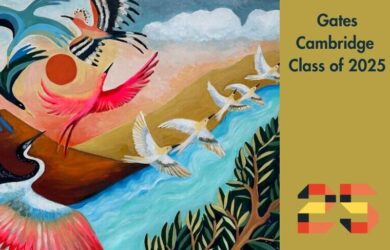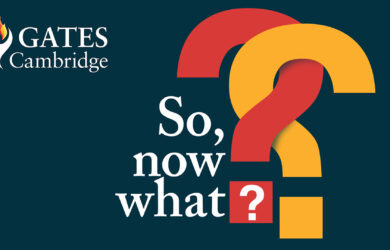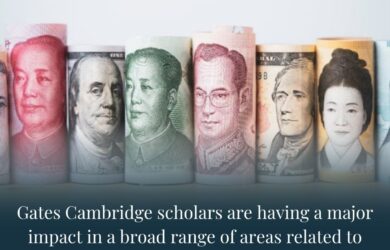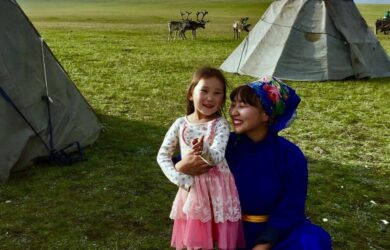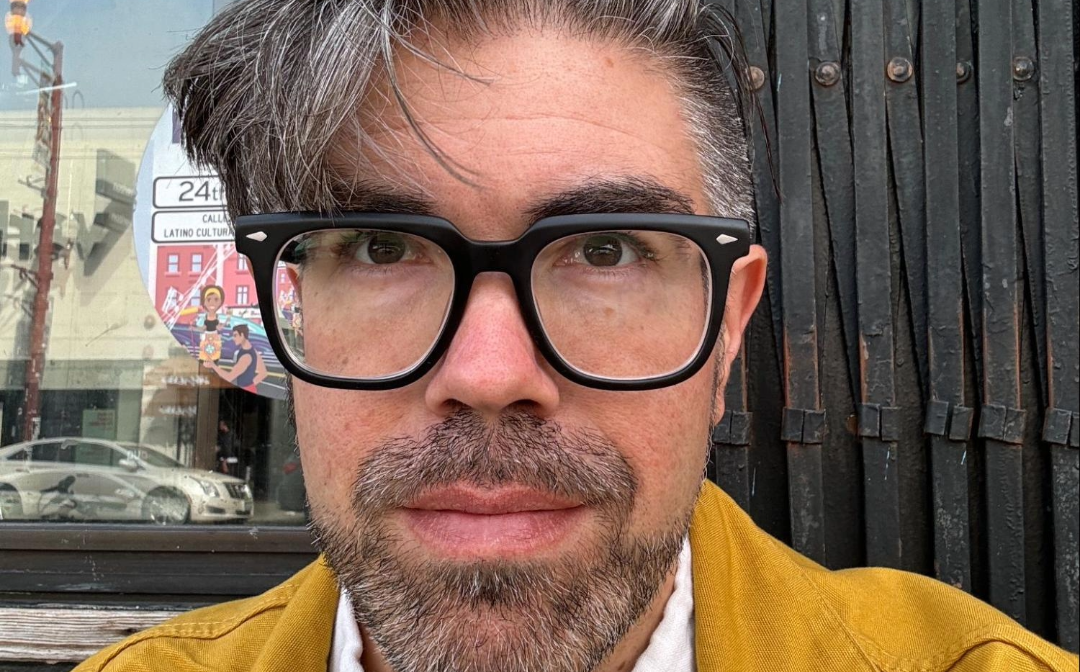
Scholar-Elect Eryk Salvaggio talks about his work in the digital humanities and how he is seeking to understand the role of the human in a world of AI
I am interested in interdisciplinary conversations about what humans bring to technology, starting from the point of view not of technology but of society and looking at AI as a medium as opposed to a technology.
Eryk Salvaggio
Eryk Salvaggio has been at the centre of discussions about the impact of new and emerging technologies on the arts for decades. Ever since internet communities were in their infancy he has been fascinated by the desire to understand how they can be used in the service of humans rather than the other way around. As such he has worked in a variety of organisations dedicated to debating their implication for the arts, for policy and for society, ranging from the Swissnex Network to the Siegel Family Endowment, and has given talks around the world on the role of new technology in the arts.
Now he is coming to Cambridge to do a PhD in the Digital Humanities – the second year of the programme’s existence – having attended its inaugural summer course in 2021. Under the supervision of Dr Leonardo Impett, his research will produce frameworks that examine assumptions about the use of generative AI in policy, pedagogy and design, harnessing all his experience not just in AI and art, but also as a teacher.
He says: “I am interested in what this technology is capable of, what we want to say yes to and how we use the humanities lens to understand what patterns and what new things it may be creating. I am trying to figure out how we approach this newness, how we use it for the benefit of human problems so we can be proactive and not overtaken by it.”
Early years
Eryk [2025] was born in New England and grew up just outside Boston. An only child, his mother worked as a daycare provider when he was young and later became a tarot reader. His father is a postman.
At school he excelled in the subjects he was interested in, such as English, art and creative writing, but found anything with numbers difficult, including remembering phone numbers and addresses, and has diagnosed himself as having dyscalculia. It was only when he was doing his master’s at LSE that he realised just how unusual his incapacity for numbers was. He got around the problem by linking numbers to stories so he could understand what numbers meant – it’s the same approach that he has taken with Artificial Intelligence, understanding datasets through stories.
Eryk first ventured online at 15. As a teenager in the 1990s – a time when internet communities were in their infancy, he became involved in experimental online art and writing and academic fora through the net.art movement. It offered a place for artists who were thinking about what the web could be and what artists could do in an online space. By the age of 19 Eryk was invited to talk about the fusion of art and technology online at the University of Ghent in Belgium and in London.
University
He enrolled at the University of Maine in 2006 after giving a talk in the Media Department and meeting Jon Ippolito, Professor of New Media and Director of the Digital Curation programme there. It was his second time at university, having dropped out of an earlier course because it was not able to match his interest in art and technology. “It was too early. I couldn’t do what I wanted to do so I dropped out and started writing about the work I was interested in instead,” he says.
Eryk did two degrees at Maine in New Media and Journalism as well as a minor in Psychology and describes his time there, where he met the artist Professor Owen Smith, as ‘formative’ in the way he thinks about art and technology. Eryk also became heavily involved in journalism at Maine. He was editor of the university’s newspaper, new media editor of his local paper, Bangor Daily News, in his senior year and wrote for Turbulence.org, known as one of the foremost websites for net art.
Japan and beyond
After graduating, Eryk took a different turn. He went to Fukuoka in Japan to teach English as part of the Japan Exchange and Teaching (JET) Programme. His grandfather was living there when Eryk was born and had sent him letters, toys and books so he had long been fascinated by the idea of experiencing such a different culture. During his time in Japan he wrote a self-reflective blog about his experience of being in a different culture which became very popular. Japan at the time had a different relationship with technology than in the US and Eryk was interested in trying to make sense of how Japanese culture talks about itself in relation to technology and how he, as an outsider with one foot in Japanese culture and one foot in US culture, feels about that.
This experience infused his master’s in Global Media and Communications at LSE where he studied how culture shapes technology. He chose LSE because he was keen to continue the experience of living both in and outside another culture, but wanted to live in an English-speaking country this time around. It was supposed to be a two-year course, but Eryk ended up doing it in one and returned to the US in 2014 where he got a job with the Wiki Education Foundation in San Francisco. The job involved working with university professors and their students to make Wikipedia better. The job got Eryk more interested in how we can teach technology instead of being afraid of it. “I was keen to think through how we work with technology and whether we could have a useful relationship with it,” he says.
In 2016 he left for a job with the Swissnex Network, a Swiss government project, also based in San Francisco. Swissnex is a network that is focused on innovation and brings together start-ups, NGOs, academics, artists and policymakers. Eryk’s role involved coordinating research and content strategy and facilitating communication with experts, mainly in relation to AI. He talks about the ‘incredible conversations’ he was party to at the events he organised. “It was a crash course in many disciplines, centred on AI, machine learning and computer vision,” he says.
Australia
After four years, Eryk left to do a second master’s in the new field of Applied Cybernetics, seizing the opportunity to study with the Australian cultural anthropologist Genevieve Bell who had founded the Australian National University’s 3A Institute. It was the first of ANU’s innovation institutes which was focused on guiding and accelerating into existence a new branch of engineering centred on cyber-physical systems and artificial intelligence. Eryk says: “It matched up with what I am interested in – interdisciplinary conversations about what humans bring to technology, starting from the point of view not of technology but of society and looking at AI as a medium as opposed to a technology.”
Eryk started the master’s course two weeks before the Covid lockdown on a paid scholarship. Covid gave him time to think and was a time in rapid acceleration of everyday use of technology such as Zoom. Eryk worked on AI-generated images, training his own data to understand the images from a range of different perspectives, from their implications for policy to the historical context of AI. During his course he also worked with the National Gallery of Australia on the role of AI in its archiving process.
In summer 2021 Eryk did an online summer course in Digital Humanities hosted by the University of Cambridge which cemented his interest in the link between archives and AI datasets. He also later spoke at the Leverhulme Centre for the Future of Intelligence, which led to the kind of conversations that later enticed Eryk to apply for a PhD at Cambridge.
Archiving in reverse
After Australia, Eryk returned to the US to be with his fiancée, who he had been separated from for a year due to Covid restrictions, and started working remotely as a consultant. It was an exciting time as Generative AI was bubbling under. Eryk worked as an emerging technology adviser for the Siegel Family Endowment which aims to understand and shape the impact of technology on society by supporting organisations working at the intersections of learning, workforce and infrastructure. His focus was on advising about what different emerging technologies could do, exploring how they could be used for the common good so that society is ahead of the curve about its potential uses.
He continues to work for the Endowment and also does talks and podcasts and is an author at TechPolicy.Press. Through these Eryk has honed his approach to AI ethics, looking at digital humanities through the lens of archives ‘in reverse’. “Archiving used to be about storing and categorising data,” he says. “Generative AI is taking the data and clumping it together and blurting it all back out. The imperfect, thoughtful process of contextualising what is in the archive has been replaced by GenAI which is regenerating things that have previously been cut away. I am interested in thinking about what is coming out of these datasets and what digital humanities can bring to the conversation.”








